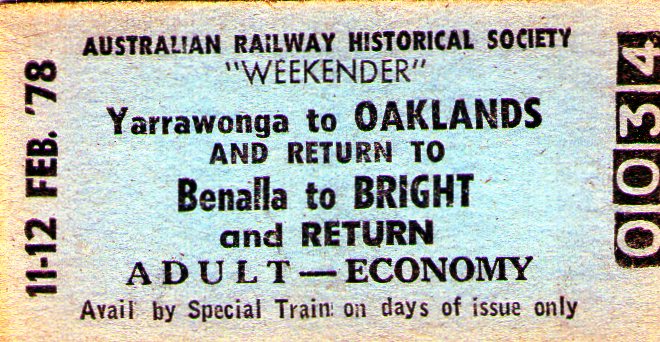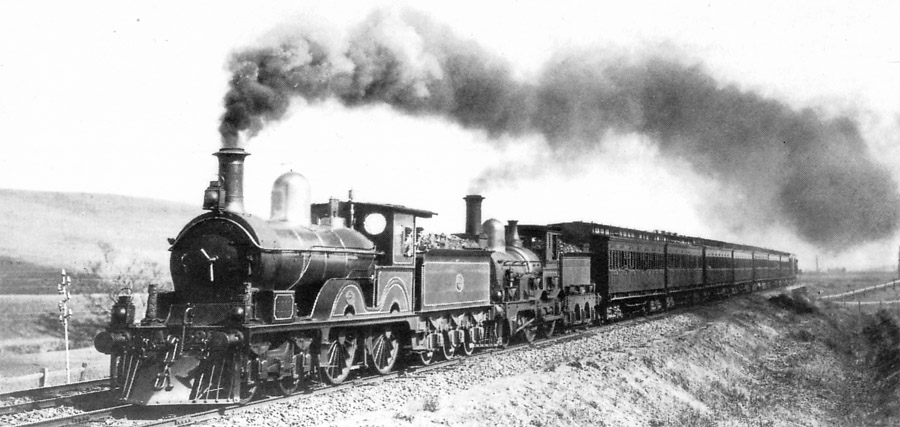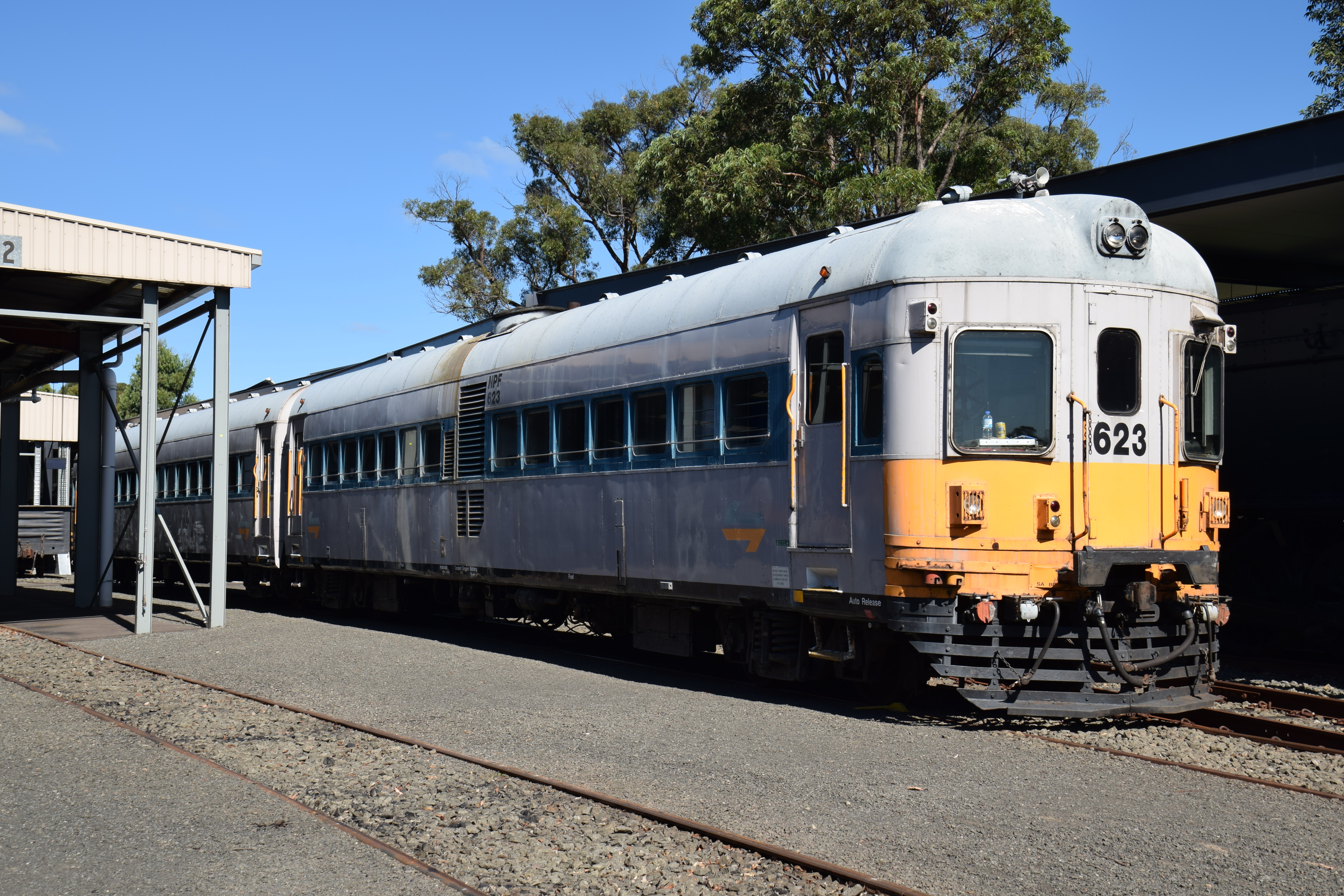|
Rail Motor Society
The Rail Motor Society, based at Paterson, New South Wales, is a community owned collection of preserved self-propelled railway vehicles and equipment from the former New South Wales Government Railways. The items in its collection date from 1923 through to 1972. About The Society was established in 1984 as a community based not-for-profit organisation and is registered with Australian Charities and Not-for-profits Commission (ACNC) as a charity. The Society's primary aim is to collect, preserve and operate a representative fleet of New South Wales Government Railways rail motors. The Society's sole focus was to be on self-propelled or diesel multiple unit rolling stock, a principle that it still adheres to today. The Society is accredited as a rail transport operator in New South Wales, Victoria, Queensland, the Australian Capital Territory and South Australia by thOffice of the National Rail Safety Regulator(ONRSR). History The Society's origins stem from the Newcastle Branch ... [...More Info...] [...Related Items...] OR: [Wikipedia] [Google] [Baidu] |
Paterson, New South Wales
Paterson is a small township in the lower Hunter Region of New South Wales, Australia. Located within Dungog Shire, it is situated on the Paterson River. It is in the middle of what was once dairy, timber and citrus country and is now more significantly a feeder town for the nearby mining industry in the Upper Hunter and the city of Newcastle. It was named after one of the first known Europeans in the area was Colonel William Paterson in 1801 surveyed the area beside the river. Geography It is approximately 15 minutes drive north along either Tocal or Paterson Roads from the nearest major township of Maitland. Paterson railway station lies on the main North Coast Railway Line between Sydney and Brisbane with daily services north to Dungog and south-east to Newcastle. Adjoining areas include Duns Creek, Martins Creek and Vacy. History The area was once occupied by the Wonnarua and Worimi peoples, who are Aboriginal Australian groups. The first official European in the a ... [...More Info...] [...Related Items...] OR: [Wikipedia] [Google] [Baidu] |
Sydney Tramway Museum
The Sydney Tramway Museum (operated by the South Pacific Electric Railway) is Australia's oldest tramway museum and the largest in the southern hemisphere. It is located at Loftus, New South Wales, Loftus in the southern suburbs of Sydney. History Construction of the museum at its original site on the edge of the Royal National Park commenced in August 1956. It was officially opened in March 1965 by NSW Deputy Premier Pat Hills. The facilities were basic, initially a four-track shed built with second hand materials and approximately 800 metres of running track. In 1975, the Government of New South Wales approved the museum moving to a new site across the Princes Highway adjacent to Loftus railway station, Sydney, Loftus railway station. Construction commenced in April 1980, with the first trams transferred from the old site in November 1982. It officially opened on 19 March 1988. The former Railway Square tramway shelter that had been disassembled in 1973 was reassembled. The ... [...More Info...] [...Related Items...] OR: [Wikipedia] [Google] [Baidu] |
Green 7344
Green is the color between cyan and yellow on the visible spectrum. It is evoked by light which has a dominant wavelength of roughly 495570 nm. In subtractive color systems, used in painting and color printing, it is created by a combination of yellow and cyan; in the RGB color model, used on television and computer screens, it is one of the additive primary colors, along with red and blue, which are mixed in different combinations to create all other colors. By far the largest contributor to green in nature is chlorophyll, the chemical by which plants photosynthesize and convert sunlight into chemical energy. Many creatures have adapted to their green environments by taking on a green hue themselves as camouflage. Several minerals have a green color, including the emerald, which is colored green by its chromium content. During post-classical and early modern Europe, green was the color commonly associated with wealth, merchants, bankers, and the gentry, while red was r ... [...More Info...] [...Related Items...] OR: [Wikipedia] [Google] [Baidu] |
Oaklands Railway Line, Victoria
The Oaklands railway line is a freight-only railway line in north-eastern Victoria, Australia. The line branches from the main North East railway at Benalla station and runs across the Victoria-New South Wales border to the town of Oaklands, New South Wales. History The first section of line opened in 1883 as a branch line to St James, at the same time as the extension of the main line to Albury in New South Wales. In 1886, the line was extended another to Yarrawonga, on the southern bank of the Murray River, which formed the colonial and, later, the state boundary between Victoria and New South Wales. Under the 1922 Border Railways Act, the line was extended another 61 kilometres to Oaklands, New South Wales, where it met the existing New South Wales branch line, thereby becoming a break-of-gauge location. Although the construction of the extension was completed in 1932, trains on it were operated by the Railway Construction Branch, mostly using a rail tractor as motive ... [...More Info...] [...Related Items...] OR: [Wikipedia] [Google] [Baidu] |
North East Railway Line
The North East railway line is a railway line in Victoria, Australia. The line runs from Albury railway station in the border settlement of Albury–Wodonga to Southern Cross railway station on the western edge of the Melbourne central business district, serving the cities of Wangaratta and Seymour, and smaller towns in northeastern Victoria. The line is owned by VicTrack, but leased to, and maintained by, the Australian Rail Track Corporation, and forms part of the Sydney–Melbourne rail corridor. Unlike most other heavy rail lines in Victoria, the line is completely standard gauge, after works were carried out between 2008 and 2010. However, the broad gauge Tocumwal line runs parallel to the line between Seymour and Broadmeadows. History The Melbourne and Essendon Railway Company opened the first section of the Albury line, from North Melbourne to Essendon, in 1860. Following its takeover by the Victorian Government in 1867, the line was extended by 1872 to S ... [...More Info...] [...Related Items...] OR: [Wikipedia] [Google] [Baidu] |
Australian Rail Track Corporation
The Australian Rail Track Corporation (ARTC) is an Australian Government-owned statutory corporation. It operates one of the largest rail networks in the nation spanning 8,500km across five states, 39 worksites and more than 50 First Nations. ARTC continues to expand the network through major infrastructure projects including Inland Rail, which is a new 1,700km freight line between Melbourne and Brisbane via regional Victoria, NSW and Queensland that will complete Australia’s national freight network and better connect producers to markets. History In November 1996, the Australian Government announced a major rail reform package that included the sale of government-owned train operators Australian National and National Rail, and the establishment of ARTC to manage the sections of the interstate rail network which had been controlled by the two former organisations. ARTC was incorporated in February 1998, with operations starting in July 1998 when the lines managed by Austra ... [...More Info...] [...Related Items...] OR: [Wikipedia] [Google] [Baidu] |
Sydney Trains
Sydney Trains is the operator of the suburban passenger rail network serving the city of Sydney, New South Wales, Australia. The network is a hybrid urban- suburban rail system with a central underground core that covers over of track and 170 stations over eight lines. It has metro-equivalent train frequencies of every three minutes or better in the underground core, 5–10 minutes off-peak at most inner-city and major stations and 15 minutes off-peak at most minor stations. During the weekday peak, train services are more frequent. The network is managed by Transport for NSW, and is part of its Opal ticketing system. In 2018–19, 377.1 million passenger journeys were made on the network. History In May 2012, the Minister for Transport announced a restructure of RailCorp, the organisation that owned and managed the metropolitan rail network and operated passenger services throughout New South Wales. Two new organisations were created to take over operation of the services f ... [...More Info...] [...Related Items...] OR: [Wikipedia] [Google] [Baidu] |
Transport Heritage NSW
In 2013, Transport Heritage NSW was established by the Government of New South Wales to manage the State’s rail heritage collection and provide support to the broader transport (bus, tram, rail) heritage sector in NSW following an independent review. History In May 2013, Minister for Transport Gladys Berejiklian acknowledged the importance of steam locomotive 3801, stating it would be a priority of Transport Heritage NSW to return it to service. On 10 December 2013, a majority of the members of the New South Wales Rail Transport Museum voted in support of the creation of Transport Heritage NSW. Other transport heritage groups also expressed concern for their future existence. Peter Lowry was appointed as chairperson of the board and the nominated chief executive of Transport Heritage NSW, Andrew Killingsworth has been seen as a political appointment. In February 2016, Andrew Moritz was appointed as the new chief executive following the resignation of Andrew Killingsworth. O ... [...More Info...] [...Related Items...] OR: [Wikipedia] [Google] [Baidu] |
RailCorp
Rail Corporation New South Wales (RailCorp) was an agency of the State of New South Wales, Australia established under the ''Transport Administration Act 1988'' in 2004. It was a division under the control of Transport for NSW since the latter's establishment in 2011. RailCorp was converted into a state-owned corporation and renamed Transport Asset Holding Entity (TAHE) on 1 July 2020.Transport for NSW Annual Report 2016-17 page 142,237 Transport for NSW, Retrieved 18 January 2018Transport Administrat ... [...More Info...] [...Related Items...] OR: [Wikipedia] [Google] [Baidu] |
New South Wales 620/720 Class Railcar
The 620/720 class railcars were a class of diesel multiple unit built by the New South Wales Government Railways and operated from 1961 until 2007. Construction The 620/720 class railcars were an evolution of the 600/700 railcars that had been built in 1949/50. Like their predecessors they were built with an aluminium body on a steel frame at the New South Wales Government Railways' Chullora Railway Workshops. However they were fitted with different engines, six receiving two 8-cylinder Rolls-Royce C8SFLH with Rolls-Royce DFR 11500 transmissions, 11 receiving two 6-cylinder GM Detroit Diesel 6/110 with Allison RC3 transmissions and one receiving two 6-cylinder Cummins NHHRTO-6-B1 engines with Twin Disc DFFR 10034 transmissions. History The first five sets were ordered to operate suburban services out of Newcastle and were fitted with economy class seats throughout. The next six were constructed with both first and economy class accommodation to operate longer services out of ... [...More Info...] [...Related Items...] OR: [Wikipedia] [Google] [Baidu] |
New South Wales 400/500 Class Railmotor
The 400/500 class rail motors are diesel trains built by New South Wales Government Railways primarily for use on regional lines throughout NSW. The trains have since been phased out following a rationalisation of country branch line rail services in November 1983. The 400 Class power cars were built in 1938 at the Eveleigh Carriage Workshops, while the 500 Class trailer cars were built by Ritchie Brothers at Auburn. Power Cars The 400 Class power cars followed the same general lines as the Silver City Comet powers vans, although they were slightly shorter in length at . They were fitted with two underfloor Leyland in-line six-cylinder, petrol engines coupled to Leyland Lysholm-Smith hydraulic transmissions. This was a repeat of the installation used in the earlier Rail Motor No.38. No multiple unit capability was provided. Each power car was capable of hauling one or two trailer cars. The mechanical equipment was mounted underfloor and a passenger compartment seating 19 Sec ... [...More Info...] [...Related Items...] OR: [Wikipedia] [Google] [Baidu] |
Railway Digest
''Railway Digest'' is a monthly magazine, published in Sydney, covering contemporary railways of Australia. Overview The magazine's publisher is the Australian Railway Historical Society (ARHS), NSW Division. The first issue was published in March 1963 under the name ''New South Wales Digest'' and regular publication commenced with the May 1963 edition. It was renamed in January 1983. In January 1985 it changed paper size from SRA5 to A4. Originally an enthusiast magazine mainly focusing on reporting day-to-day workings of the New South Wales Government Railways and it successors, it was produced by volunteers using a hand-operated duplicator at the home of one of its members. In May 1993, a paid editor was appointed and the magazine's focus gradually shifted to reporting news from across Australia. It has evolved into a professional full-colour production directed at the wider community and commercially distributed to newsagents throughout Australia."Adapt or disappear - the ... [...More Info...] [...Related Items...] OR: [Wikipedia] [Google] [Baidu] |






